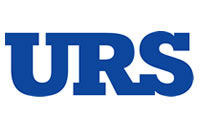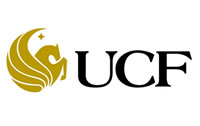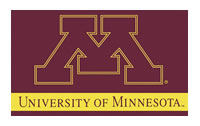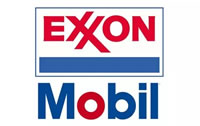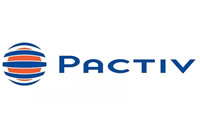Connectivity, mobility, and usability are foundational.
By Sheila Kennedy for Plant Services Magazine
Plant Services, December 14, 2017
That today’s technology has the power to transform industrial business is without question. Digital transformation, or digitalization, is the aspiration for many industrial organizations, though some still wonder what this nebulous concept really means and to what extent its promise is achievable.
The key to digitalization is commonly viewed as the industrial internet of things (IoT), but the IoT alone cannot drive transformation. Manufacturing plants, utilities, and other heavy industrial facilities cannot rely solely on new devices and connected technologies for transformative improvements in operations and maintenance. They must also have a high degree of usability and mobility in their enterprise software.
Successfully integrating these three basic principles – connectivity, mobility, and usability – is foundational to enabling measurable business value from digitalization initiatives. However, the fast pace of technology innovation makes this task all the more challenging.
“We are living in a time when technological advancements can overwhelm us with complexity,” says Tom Moriarty, president of Alidade MER. “It’s an incredible time, with capabilities available to us that promise orders-of-magnitude improvements.”
Opportunities for improvement are found in industrial design, operations, and maintenance as well as in aftermarket services. Moriarty believes the greatest value from digital transformation comes from being able to remove defects before high-cost repairs or catastrophic failures occur.
To better understand the relationship between the industrial IoT and enterprise software mobility and usability as well as the collective influence of these on achieving digital transformation, enterprise software vendor IFS conducted three primary research studies of 200 North American industrial executives in 2017. The company’s findings help shed light on whether and how well enterprise software is supporting digital transformation today and where work is needed to overcome barriers.
Connectivity
With the IoT, companies can integrate enterprise software with a network of connected devices to collect and analyze real-time data, enable machine learning, automate business processes, and transform operations and asset management – not just internally but with third parties such as OEMs, parts suppliers, and service providers.
Equipment sensors and controllers, smartphones and tablets, and supervisory control and data acquisition (SCADA) networks are already pervasive in the industrial space, and new IoT options are being introduced at lightning speed. However, each is just a piece of the digital transformation puzzle.
“IoT is not just adding sensors or even better sensors, or improving communications or doing better data analysis. IoT projects combine one or more of these elements to create something new, to provide asset and enterprise health measures in real time,” says Earl Hill, principal at Loma Consulting. “For example, IoT sensors and communications are necessary to collect much of the data needed to make Big Data analytics happen.”
Connectivity on the plant floor can be a barrier to digital transformation, observes Kethlyn White, digital manufacturing and IIoT go-to-market lead at Capgemini. “A lot of times companies are struggling with physically connecting the machines or figuring out how to get the data off the machines. We are seeing a lot of unused data out there and no plan on how to use the data to support broader transformation,” she says.
“When we do our plant walk-throughs, we always consider these key points before getting too deep into a transformation discussion to make sure we clearly understand the starting point,” adds White.
IFS’ September 2017 study, published in a white paper titled Industrial Internet of Things (IoT) and Digital Transformation, found that enterprise software must actively facilitate the IoT in order for data from connected devices to drive transformational value. When enterprise resource planning (ERP), enterprise asset management (EAM/CMMS), and field service management (FSM) software prepares companies well for digital transformation, they are able to make better and more complete use of IoT data than other respondents.
The study shows that even when companies feel their enterprise software is strong in facilitating IoT, they still tend to use data from connected devices on the plant floor for things like process automation. DTleaders, who are more confident with overall digital transformation, also tend to apply the IoT more holistically with help from their enterprise software. This is in contrast to DT laggards who—even if they are also strong in IoT—say their enterprise software helps them less with digital transformation.
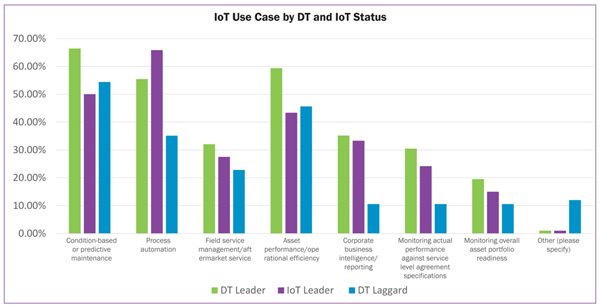
For instance, DT leaders are more likely to use IoT data to create operational efficiencies, conduct asset performance management, and perform condition-based or predictive maintenance to detect and correct early signs of equipment failure.
Notably, no category of respondents was more than 20% likely to say that their enterprise software did “very well” in preparing them to consume data from the IoT. Clearly, many software vendors and their customers have work to do in this area – whether it’s through better education, adoption of new technologies or solution improvements.
The study also found that manufacturers as well as aftermarket service providers such as OEMs, suppliers, and service contractors benefit from IoT data that facilitates proactive service of industrial machinery and other capital assets. It is noteworthy that 30% of respondents overall who are using the IoT to manage and maintain aftermarket service work for their customers.
IoT-enabled business transformation also comes from increasing revenue and pursuing new revenue streams. For example, companies can use the IoT to monitor and improve performance against service-level agreements (SLAs), and to gain a better understanding of how customers actually use equipment to drive design improvements.
Mobility
Extending software applications to mobile devices transforms the functions of operations, maintenance, field service, and supply-chain management. It expedites work processes by allowing data to be collected and accessed in real time, allowing for immediate interaction. Tutorials, engineering drawings, diagnostic information, and analytics are available on the spot. Geolocation and cameras drive valuable new streams of information into the application.
Mobility has to be the way of the future given all of the new communications tools we have, says Loma Consulting’s Hill. “The savings in time, the end of transcription errors, and the ability to record the location and time when actions take place make mobile solutions too powerful to ignore for any organization that wants to remain anywhere near top performance,” he explains.
In a survey for the June 2017 study, Enterprise Software Mobility and Digital Transformation, IFS found that software mobility and readiness for digital transformation are closely linked but that only 31% of respondents reported regularly accessing enterprise software from a mobile device. Tablets were the most supported device, and respondents age 55 and older were the heaviest mobile users. The report speculates that this trend may be due to the ways that senior managers, supervisors and those involved in analytics and decision-making use enterprise software are different; also, some organizations may restrict mobile access to senior managers with company-issued tablets which are used to consume data while offering minimal options to execute transactions in the system.
The study examined mobile experiences with ERP, EAM, FSM, customer relationship management (CRM), and supply chain management (SCM) software. Middle-market companies (between $100 million and $1 billion in revenue) were found to struggle the most with mobility, particularly for ERP software.
Poor mobility hinders the ability to generate revenue from services. DT leaders are more likely to be engaged in after-market service models, while 88% of DT laggards reported having manufacturing-centric business models.
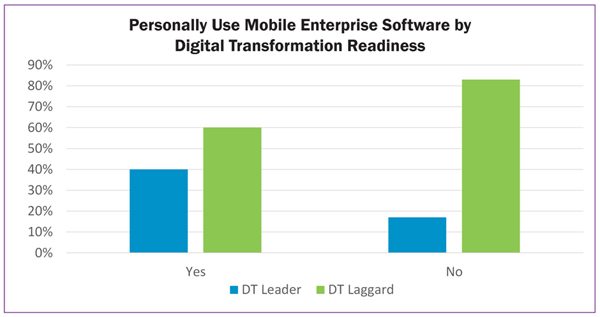
Usability
Usability determines whether and to what extent an application or device is adopted by its intended users. Highly usable enterprise software is transformative because it is used more often and captures more – and timelier – data. It is intuitive to learn and use, contains all necessary functionality, includes agile data visualization tools, promotes collaboration, and can be configured to accommodate current business needs as well as future changes.
Alternatively, digital transformation will fail if users prefer workarounds to the provided software and technology.
The October 2017 IFS study Enterprise Software Usability and Digital Transformation looked at the usability of ERP, EAM, FSM, CRM, and SCM software. One striking finding is that in situations where enterprise software usability is poor, 88% of respondents said they would be likely to use spreadsheets (84% cited Microsoft Excel). But doing so can result in a loss of data visibility, governance, and control; hinders decision making; and even creates new cybersecurity risk exposure.
Another surprise is the percentage of respondents saying were definitely or somewhat likely to consider changing jobs over poor software usability: 26% of 18- to 35-year-olds, 45% of 36- to 45-year-olds, 33% of 46- to 55-year-olds, and 33% of those older than 55. Considering the importance of experienced-employee retention, ensuring maximum usability should be a high priority.
DT laggards were more likely to report insufficient integration among their software modules and a lack of important usability measures including alignment between their software and the business. In terms of business size, middle-market companies were found to experience the greatest challenges with software usability—perhaps because their business is as complex in terms of multiple manufacturing modes, divisions and business models but their enterprise software cannot encompass all of their diverse needs.
Align preparations with expectations
It is clear that realizing digital transformation through advanced technologies like IoT depends on multiple other factors, including software usability ease of mobile access. But digital transformation has less to do with technology than it does with people and their will to advance the business.
Once you have the new IoT platforms, software and tools, Capgemini’s White asks, what will you do? What is your organization’s vision? What are its transformation goals? “Consider the whole problem from engineering down to the plant floor and identify how to solve for the business problems,” she recommends. “It’s extremely important to include everyone in your organization involved in the end-to-end process of defining this vision, from the shop floor to the top floor, to make sure you have a full picture.”
If your core data tables, management processes, measures, and reports are not fully optimized and utilized, your asset management software and enabling technologies will deliver a disappointing return on investment (ROI), Alidade MER’s Moriarty cautions. “Mobile computing without process improvements lets you perform an ineffective process faster,” he notes. “Condition monitoring technologies added to a reactive maintenance environment with ineffective planning and scheduling won’t prevent asset failures.”
Moriarty suggests focusing on what is achievable with the resources you have, making sure that your guidance and measures are robust and making sure your leadership team and team members have the acumen to execute consistently. “That is how you derive value from the investments,” he says.




